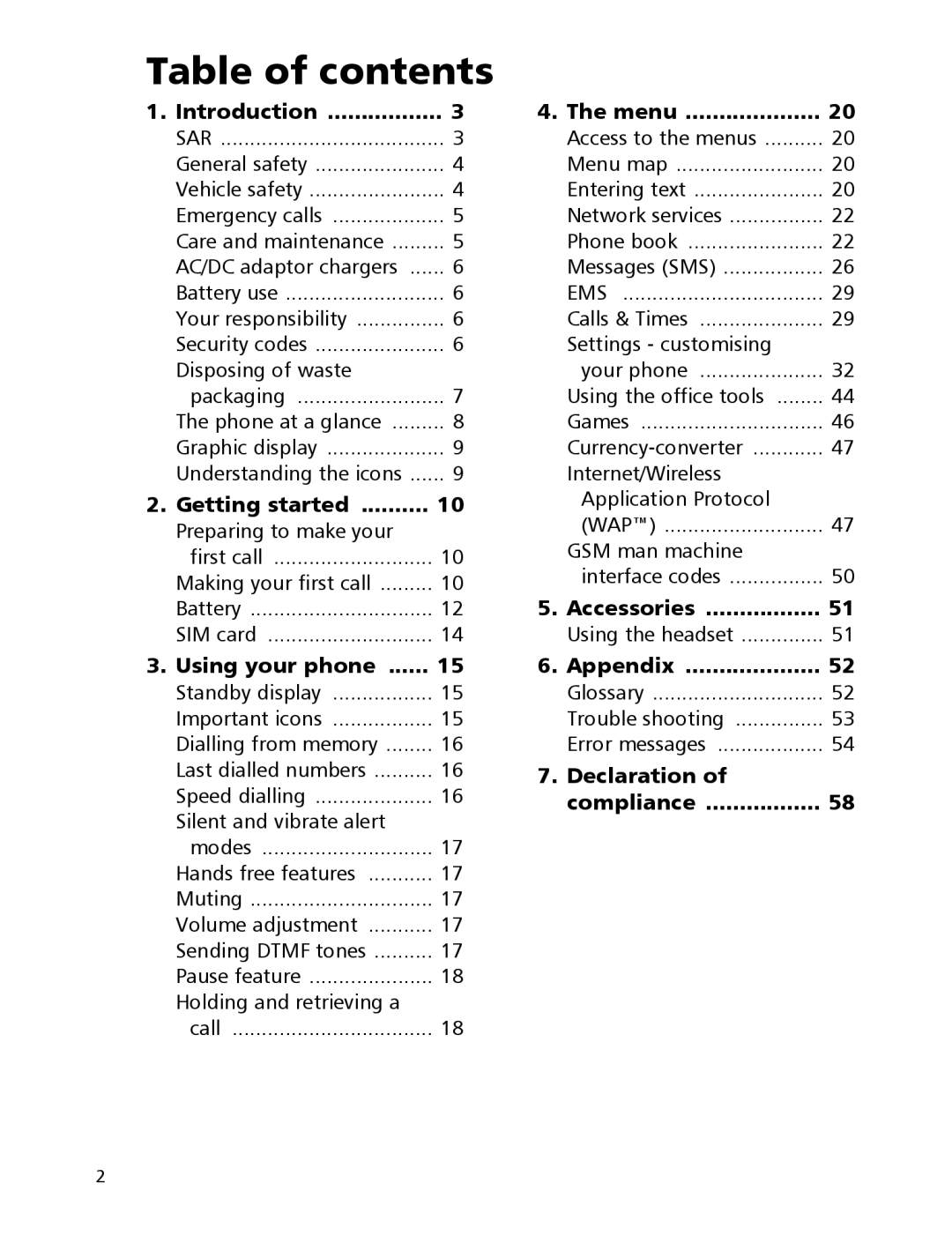Table of contents
1. Introduction | 3 |
SAR | 3 |
General safety | 4 |
Vehicle safety | 4 |
Emergency calls | 5 |
Care and maintenance | 5 |
AC/DC adaptor chargers | 6 |
Battery use | 6 |
Your responsibility | 6 |
Security codes | 6 |
Disposing of waste |
|
packaging | 7 |
The phone at a glance | 8 |
Graphic display | 9 |
Understanding the icons | 9 |
2. Getting started | 10 |
Preparing to make your |
|
first call | 10 |
Making your first call | 10 |
Battery | 12 |
SIM card | 14 |
3. Using your phone | 15 |
Standby display | 15 |
Important icons | 15 |
Dialling from memory | 16 |
Last dialled numbers | 16 |
Speed dialling | 16 |
Silent and vibrate alert |
|
modes | 17 |
Hands free features | 17 |
Muting | 17 |
Volume adjustment | 17 |
Sending DTMF tones | 17 |
Pause feature | 18 |
Holding and retrieving a |
|
call | 18 |
4. The menu | 20 |
Access to the menus | 20 |
Menu map | 20 |
Entering text | 20 |
Network services | 22 |
Phone book | 22 |
Messages (SMS) | 26 |
EMS | 29 |
Calls & Times | 29 |
Settings - customising |
|
your phone | 32 |
Using the office tools | 44 |
Games | 46 |
47 | |
Internet/Wireless |
|
Application Protocol |
|
(WAP™) | 47 |
GSM man machine |
|
interface codes | 50 |
5. Accessories | 51 |
Using the headset | 51 |
6. Appendix | 52 |
Glossary | 52 |
Trouble shooting | 53 |
Error messages | 54 |
7.Declaration of compliance ................. 58
2
